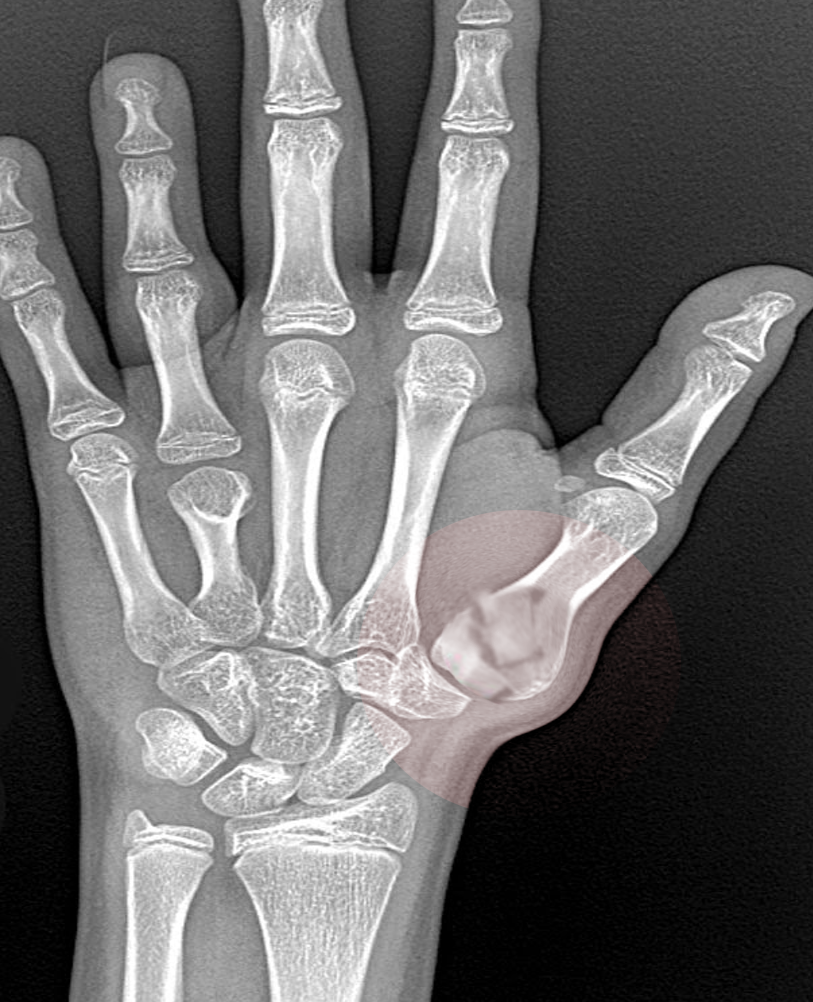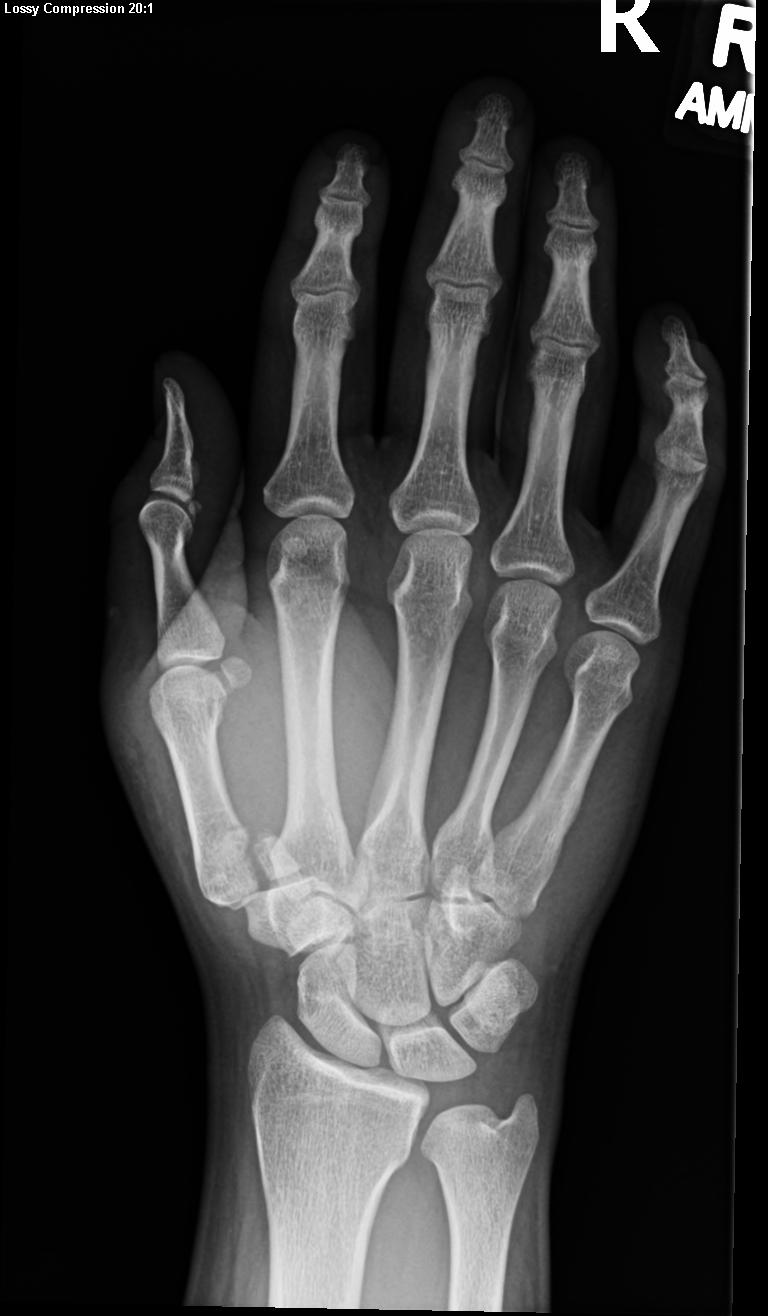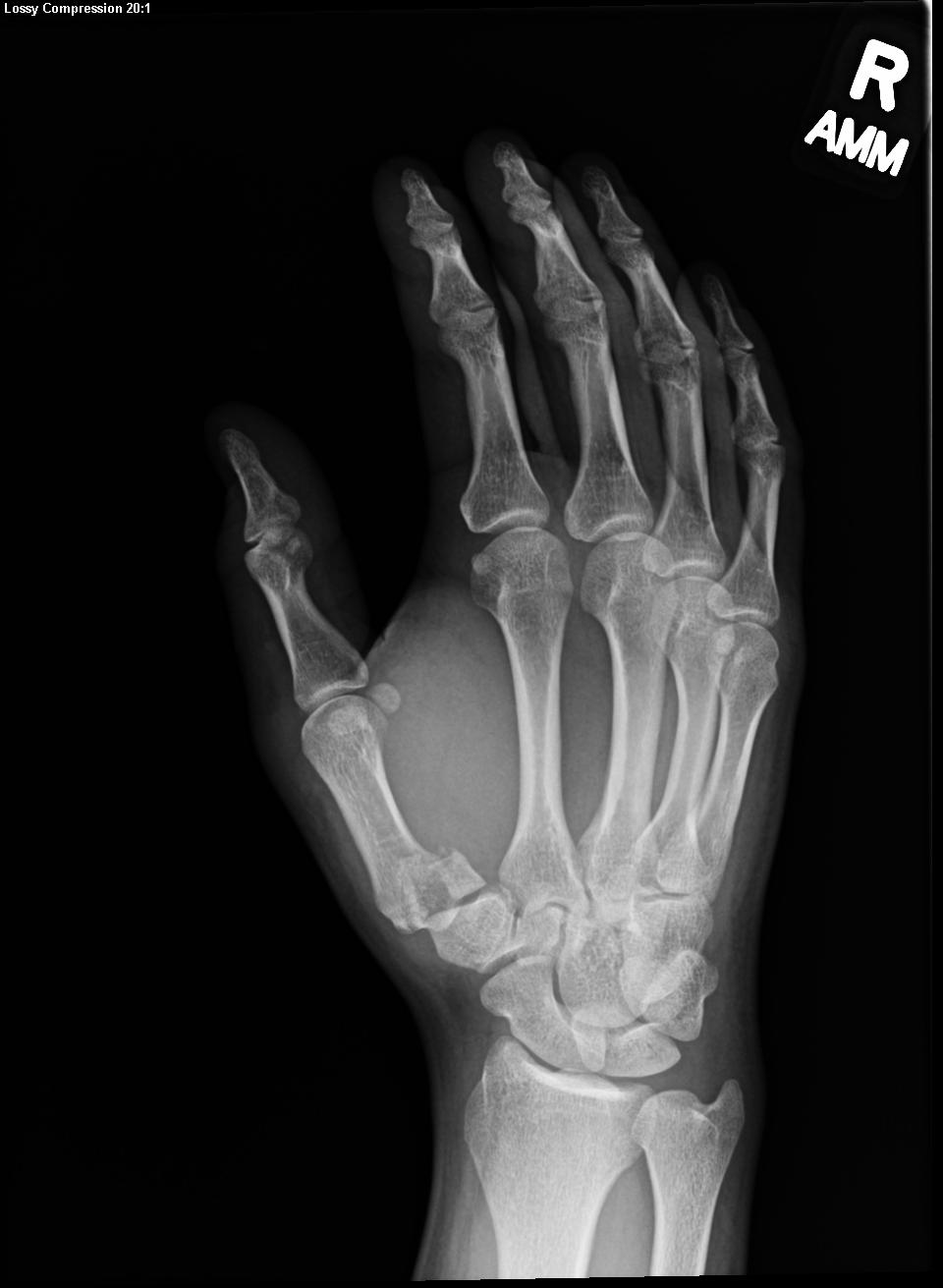[1]
Edmunds JO. Traumatic dislocations and instability of the trapeziometacarpal joint of the thumb. Hand clinics. 2006 Aug:22(3):365-92
[PubMed PMID: 16843802]
[2]
McGuigan FX, Culp RW. Surgical treatment of intra-articular fractures of the trapezium. The Journal of hand surgery. 2002 Jul:27(4):697-703
[PubMed PMID: 12132098]
[3]
Stanton JS, Dias JJ, Burke FD. Fractures of the tubular bones of the hand. The Journal of hand surgery, European volume. 2007 Dec:32(6):626-36
[PubMed PMID: 17993422]
[4]
Carlsen BT, Moran SL. Thumb trauma: Bennett fractures, Rolando fractures, and ulnar collateral ligament injuries. The Journal of hand surgery. 2009 May-Jun:34(5):945-52. doi: 10.1016/j.jhsa.2009.03.017. Epub
[PubMed PMID: 19411003]
[5]
GEDDA KO. Studies on Bennett's fracture; anatomy, roentgenology, and therapy. Acta chirurgica Scandinavica. Supplementum. 1954:193():1-114
[PubMed PMID: 13188578]
[6]
Kjaer-Petersen K, Langhoff O, Andersen K. Bennett's fracture. Journal of hand surgery (Edinburgh, Scotland). 1990 Feb:15(1):58-61
[PubMed PMID: 2307882]
[7]
Oosterbos CJ, de Boer HH. Nonoperative treatment of Bennett's fracture: a 13-year follow-up. Journal of orthopaedic trauma. 1995 Feb:9(1):23-7
[PubMed PMID: 7714650]
[8]
Timmenga EJ, Blokhuis TJ, Maas M, Raaijmakers EL. Long-term evaluation of Bennett's fracture. A comparison between open and closed reduction. Journal of hand surgery (Edinburgh, Scotland). 1994 Jun:19(3):373-7
[PubMed PMID: 8077832]
[9]
Cannon SR, Dowd GS, Williams DH, Scott JM. A long-term study following Bennett's fracture. Journal of hand surgery (Edinburgh, Scotland). 1986 Oct:11(3):426-31
[PubMed PMID: 3794490]
[10]
Demir E, Unglaub F, Wittemann M, Germann G, Sauerbier M. [Surgically treated intraarticular fractures of the trapeziometacarpal joint -- a clinical and radiological outcome study]. Der Unfallchirurg. 2006 Jan:109(1):13-21
[PubMed PMID: 16133289]
[11]
Cullen JP, Parentis MA, Chinchilli VM, Pellegrini VD Jr. Simulated Bennett fracture treated with closed reduction and percutaneous pinning. A biomechanical analysis of residual incongruity of the joint. The Journal of bone and joint surgery. American volume. 1997 Mar:79(3):413-20
[PubMed PMID: 9070532]
[12]
Kadow TR, Fowler JR. Thumb Injuries in Athletes. Hand clinics. 2017 Feb:33(1):161-173. doi: 10.1016/j.hcl.2016.08.008. Epub
[PubMed PMID: 27886832]
[13]
Hashiguchi H, Iwashita S, Yoneda M, Takai S. Factors influencing outcomes of nonsurgical treatment for baseball players with SLAP lesion. Asia-Pacific journal of sports medicine, arthroscopy, rehabilitation and technology. 2018 Oct:14():6-9. doi: 10.1016/j.asmart.2018.08.001. Epub 2018 Sep 5
[PubMed PMID: 30202738]
[14]
Fischborn T, Beckenbauer D, Held M, Daigeler A, Medved F. Analysis of Operative Techniques of Fractures of the First Metacarpal Base. Annals of plastic surgery. 2018 May:80(5):507-514. doi: 10.1097/SAP.0000000000001293. Epub
[PubMed PMID: 29319570]



